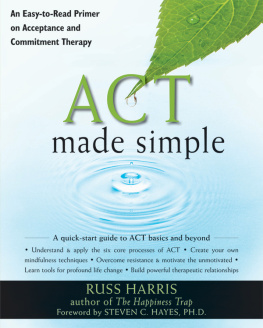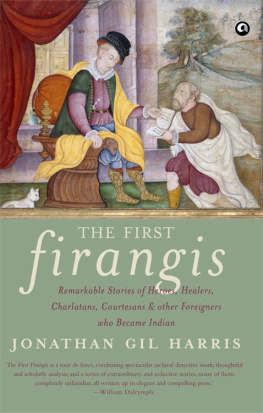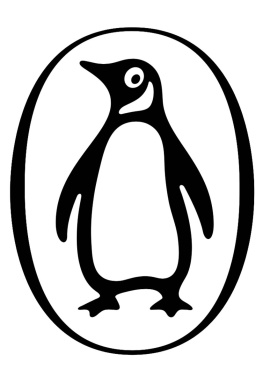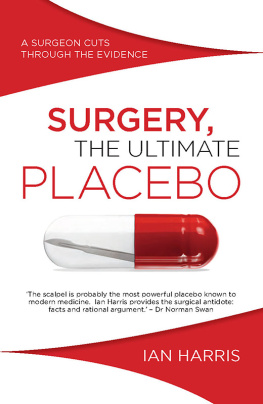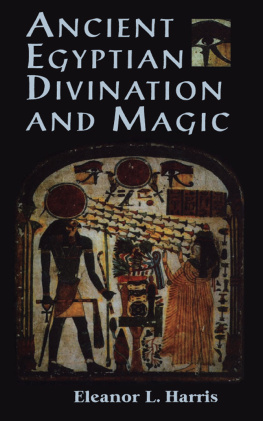Appendix 1. Case Conceptualization Made Simple
This is a very basic guide to case conceptualization. (There are far more sophisticated tools available; this one is designed to get you up and running quickly.) You can download this sheet from www.actmadesimple.com, and I encourage you to print out twenty copies and use one for each of your next twenty sessions. I guarantee that doing so will give you a big boost in terms of understanding and applying this model.
You can use the diagram below to help you plan your next session. Write down any metaphors, exercises, questions, techniques, or worksheets that you could use in the next session to help your client make a workable shift.
Appendix 2. Resources
There are now a wealth of resources for ongoing learning and training in ACT. Here are a few ideas to get you started.
Section A: Resources by Dr. Russ Harris
Books
Harris, Russ, ACT with Love (Oakland, CA: New Harbinger, 2009)
ACT with Love is an inspiring and empowering self-help book that applies the principles of ACT to common relationship issues, and details how to move from conflict, struggle, and disconnection to forgiveness, acceptance, intimacy, and genuine loving. It also functions as a step-by-step clinical guide for therapists wishing to use ACT for relationship problems, and is linked to its own resource-packed website: www.act-with-love.com.
Harris, Russ, The Happiness Trap (Wollombi, NSW, Australia: Exisle Publishing, 2007)
The Happiness Trap translates ACT into simple everyday language and practical user-friendly exercises. It is a self-help book written for everyone and anyone, applicable to everything from work stress to major depression. Its widely used by ACT therapists and their clients all around the world, and is currently translated into twelve different languages. A websitewww.thehappinesstrap.comoffers many free resources to use with the book.
CDs and MP3s
Mindfulness Skills: Volume 1 & Mindfulness Skills: Volume 2
Available as either CDs or downloadable MP3 files, these volumes cover a wide range of mindfulness exercises for use by you or with your clients. You can order them via www.actmadesimple.com (or if you live in Australia, via www.actmindfully.com.au).
Online Resources
This book is linked to the ACT Made Simple website a www.actmadesimple.com. On this site, youll find many free resources, including downloadable copies of all the handouts in this book. Youll also find some valuable online training in the form of E-courses and webinars.
Workshops
Russ runs ACT training workshops around the world. For details of Australian workshops, visit www.actmindfully.com.au. For workshops in other countries, youll find information on www.actmadesimple.com.
Newsletter
The Happiness Trap Newsletter is a regular, free, e-mail newsletter, packed with useful information, tools, and tips relating to ACT. You can register for it under the main menu at any of the websites mentioned above.
Section B: General Resources
ACT Textbooks and Self-Help Books
A wide range of ACT textbooks and self-help books now exists with the majority of them published by New Harbinger. Visit the New Harbinger website at www.newharbinger.com, or go to www.amazon.com (or some other large website that sells a wide range of books) and do a search for titles on acceptance and commitment therapy. These textbooks are all very good, and they cover the application of ACT to a wide range of issues and conditions, from chronic pain and PTSD to depression and anxiety disorders. These three books stand out as particularly relevant to new ACT practitioners:
Hayes, Steven C., Kirk Strosahl, and Kelly Wilson, Acceptance and Commitment Therapy: An Experiential Approach to Behavior Change (New York: Guilford Press, 1999)
This is the ground-breaking theoretical and philosophical text that first introduced ACT to the world, and youll find it widely cited in every other textbook on ACT.
Luoma, Jason B., Steven C. Hayes, and Robyn D. Walser, Learning ACT (Oakland, CA: New Harbinger, 2007).
This step-by-step, skills-training manual for ACT therapists lives up to its description as the most comprehensive guide to utilizing ACT in your clinical practice.
Ramner, Jonas, and Niklas Trneke, The ABCs of Human Behavior: Behavioral Principles for the Practicing Clinician (Oakland, CA: New Harbinger, 2008)
This is an excellent book on the science, theory, and philosophy underlying ACT: functional contextualism, applied behavioral analysis, and relational frame theory (RFT).
DVDs
You can also buy DVDs showing how to do ACT with clients: the series is collectively known as ACT In Action by Steven C. Hayes (Oakland, CA: New Harbinger, 2008).
Professional Organization: ACBS: Association for Contextual Behavioral Science
Membership in ACBS includes the following:
- Opportunities to participate in the online ACT and/or RFT communities, where you can share ideas and receive advice from ACT therapists and/or RFT researchers all around the world.

